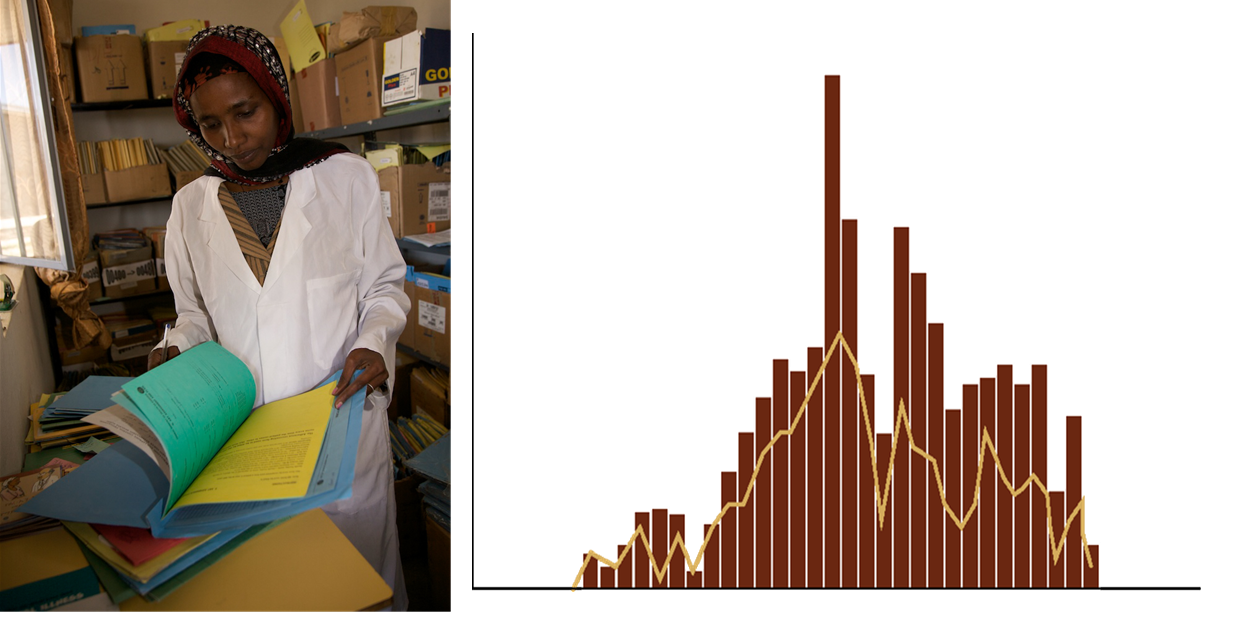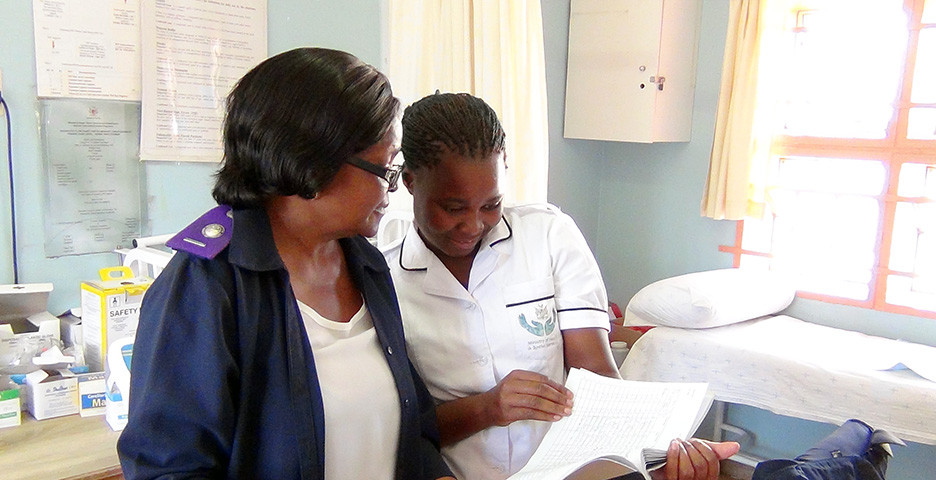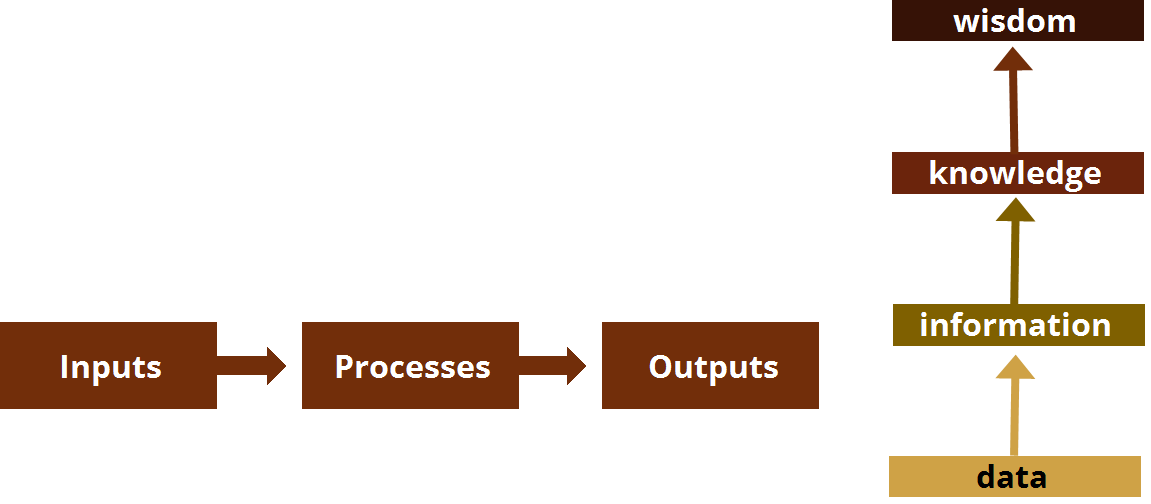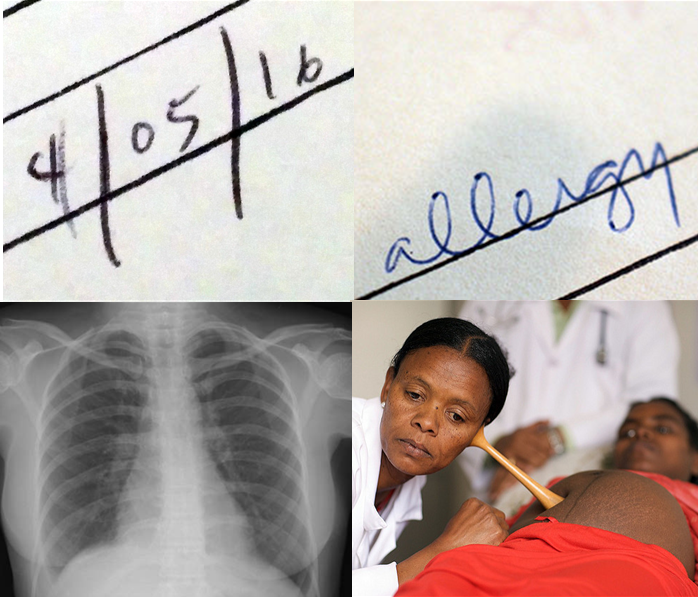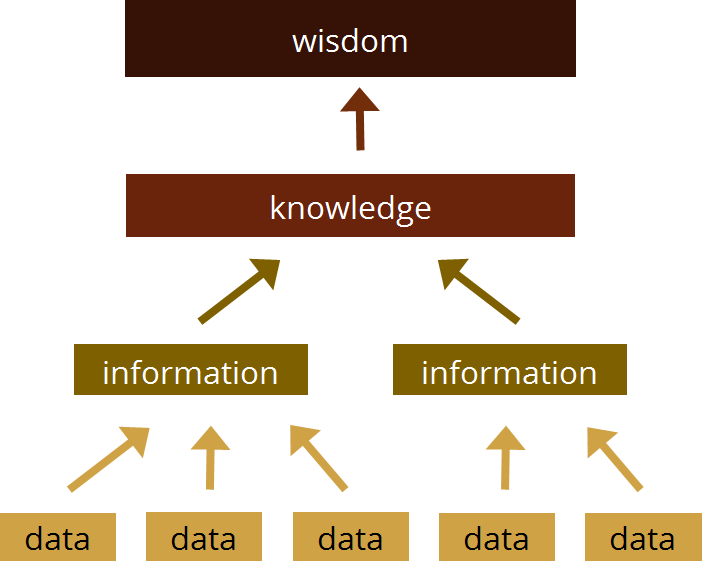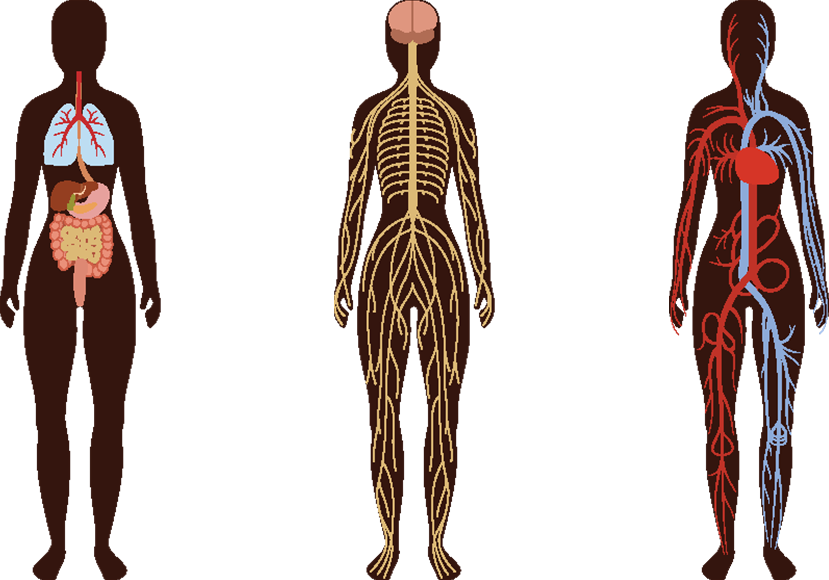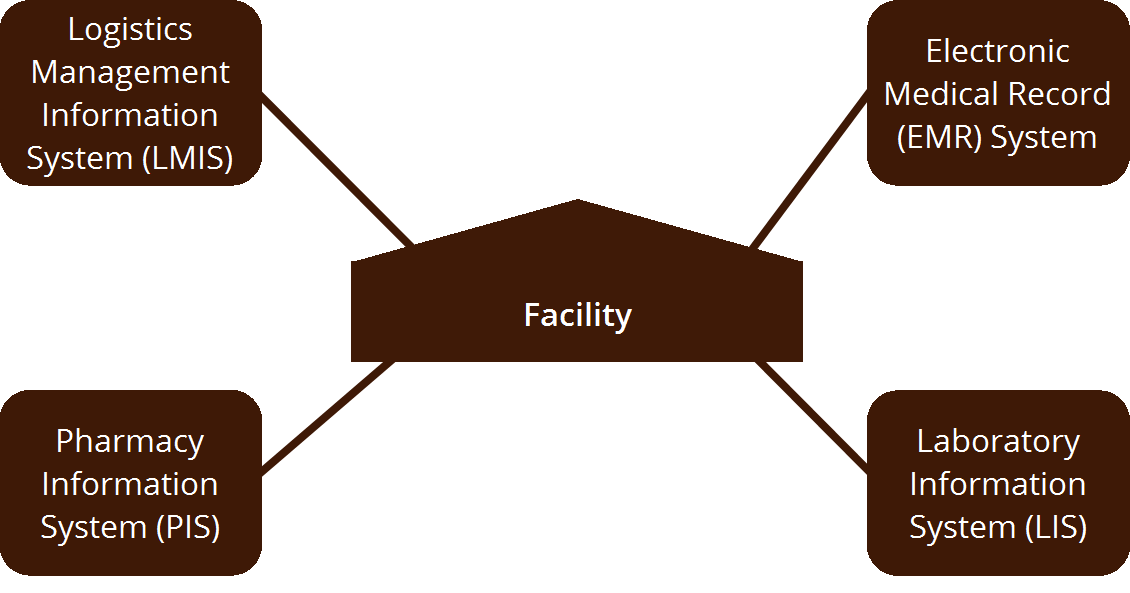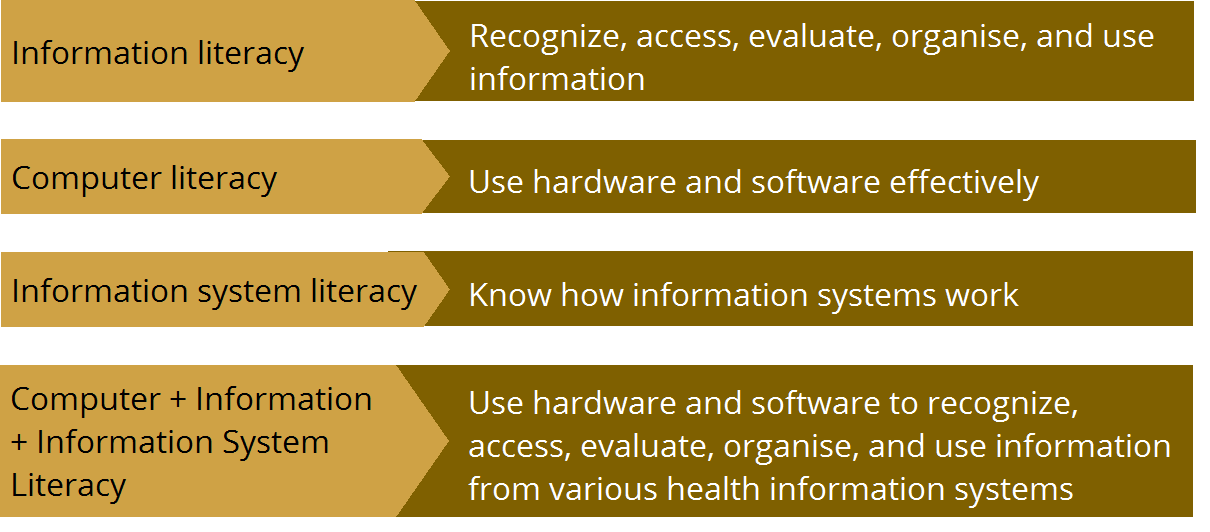Module 1: Introduction to Health Information Systems (HIS)
This module will give you an overview of Health Information Systems. Read the learning objectives to discover what you will learn in this module.
Learning Objectives
After taking this module, you’ll be able to:
- Explain the difference between information literacy, computer literacy, and information system literacy
- Define key information system terms
- Identify the components of a health information system
Learning Activities
-
Video: Using Health Care Data
Instructions: Click or tap the video to play.
-
Reading: Types of Literacy (5 min)
Health care workers like you who are information literate, computer literate, and information system literate make information systems work more efficiently.
Instructions: Click or tap on each button to learn what each type of literacy means.
Computer literacy
The knowledge of computer hardware and software applications (such as Microsoft Excel or Windows), the actual ability to operate a computer and to understand how different applications work together.
Information literacy
The ability to recognize your information needs and then access, evaluate, organise, and use information from a variety of sources.
Information systems literacy
The knowledge of how information systems work.
-
Reading: What does it mean to be information literate? (5 min)
Information can help clinicians make strong good decisions to provide better patient care and treatment. But how do you know what information to use? Information literacy describes your ability to recognize when you need specific information and then access, evaluate, organise, and use information from a variety of sources.
-
Reading: Recognizing what information you need (5 min)
The first step is to recognize what information you need. Can you describe the question you are trying to answer, the problem you are trying to solve, or the situation to which you are responding? This can help you identify main or key words to use in your search for information. Read the example on the screen to see how this works.
-
Reading: Access (5 min)
Access to information can come in a variety of ways: from asking a colleague, watching a video, or reading a report. In a health information system, information about cases or conditions can come from population-based or institution based sources as shown here. Having access to a variety of data sources will help you find all of the information you need in your situation, whether this is providing better care to a patient or using your facility’s resources more efficiently.
Population-based data sources- Censuses
- Civil registration
- Population surveys
- Individual records
- Service records
- Resource records
Imagine you are looking for information on cases that include both HIV and TB. How do you find the information you want?
You could use existing reports from your country’s health information system. If you have access to a database, you can also use a Boolean Search.
Instructions: Click or tap each button to learn more about each resource.
Existing HIS Records & Reports
To find information on cases including both HIV and TB, you will need to find out what is reported and which report includes the data you need different reports.
Boolean Search
- To find information on cases that include HIV and TB, narrow your search. Use AND to search for items that contain both search terms.
- To find information on AIDS, you may need to search by the term AIDS and acquired immune deficiency syndrome.
- To broaden your search, use OR to search for items that contain one or both of your search terms.
- If you only want information on multi-drug resistant TB, then you don’t want your search to include all results about TB.
- Use NOT to search for items which contain the first term and do not contain the second term.
-
Reading: Evaluate (5 min)
Now let’s look at how to evaluate information that you receive back from your searches.
Instructions: Click or tap the five buttons to learn about the questions you should always ask yourself when looking at your search results.
Accuracy
Is it the information you need? Does is answer your question?
Authority
Does it come from a credible source?
Objectivity
Does it provide good evidence supporting the information or does it appear to be more opinion oriented?
Currency
Is there a date available for when the information or data was added to the database? Is it new information? Or does it indicate that the information had been recently updated?
Coverage
Is it complete? And available when you need it?
-
Reading: Organise (2 min)
When you are information literate, you can organise the information you find in a way that provides clarity to the question you seek to answer or the problem you are trying to solve. In some situations where you have information of limited or poor quality, you will need to create information from a chaos of data sources into something meaningful and useful.
- Reading: Use (2 min)
-
Reading: Information System Literacy (5 min)
Now you know what it means to be computer literate and information literate. What happens when you are both computer AND information literate? Let’s move on to information systems literacy.
To become information systems literate, you need to know how information systems work. Let’s find out!
Information systems can be complex and varied. Now we will look at two aspects of information system literacy that you can use in any health facility or laboratory setting: data/information hierarchy and health information system components.
-
Reading: What is data? (5 min)
Let’s look at the data and information hierarchy first. The most basic item in an information system is data. What is data?
Data is simply a thing. It has no meaningful relationship to anything else. Data can be a fact, text, graphic, image or sound. For example, if I said the number 92, you would have no idea of what that meant. 92 is a point. Is it big? Is it small? You really have no way to be certain.
-
Reading: What is information? (5 min)
And then there is information. What is information?
If I add the words “beats per minute” or “heart rate” to a number like 92, you begin to recognize the meaning. One definition of information is data plus meaning equals information. As you can see it provides an additional description, definition or perspective - it is not just a thing. The most formal definition of information is that it is formatted, filtered, organised, structure interpreted, summarized data.
-
Quiz: Information (5 min)
Let’s look at a scenario about information…
A patient comes for an office visit. During triage, you see a vital sign of 92 beats per minute heart rate. You know from previous experiences that a “normal” resting heart rate is 70-80 beats per minute.
-
Reading: What is knowledge? (5 min)
Now let’s consider knowledge. What is it?
Knowledge is another dimension of data and information. Knowledge is what you use when you apply information to make a decision or take an action. It weaves your experience with cases, rules, processes, models and other ideas to make a determination.
Here’s how data, information, knowledge, and wisdom work together. Data are the foundational building blocks. You learned that when data are combined and given meaning, you have information. Information is applied to create knowledge. When expertise is added to all of this, we begin to have glimmers of wisdom.
-
Reading: Measles Outbreak Example (5 min)
Instructions: Click or tap each box to read an example of how data, information, knowledge, and wisdom work together.
Wisdom
The Facility-in-Charge realizes that they don’t have full immunization coverage, resulting in a vulnerable population getting sick.
Knowledge
She tells the Facility-in-Charge that they should perform an outbreak investigation. The Facility-in-Charge thinks that they should also start vaccine interventions.
Information
She remembers that there has been an increase in measles among children under 10 in two counties in the Waramkissou Region.
Data
A laboratory director reviews the number of measles cases reported for the month.
-
Reading: What is a system? (5 min)
Let’s look at the second aspect of information system literacy: health information systems. You are already familiar with many systems. One way of looking at a system, like your body, is to think of it as interacting, interrelated or interdependent elements that form a complex whole. Think of your nervous system and your cardiovascular system.
Each element in the system is affected by being in the system. What happens to the cardiovascular system if one element, the heart, stops? If one part of the system is changed or removed, the system’s behavior would change.
A system is a combination of elements connected together in an organised way to produce outputs. In a plumbing system, pipes carry hot and cold water throughout a house - and allow wastewater to drain into a sewer.
-
Activity: What is a Health System? (10 min)
A health system comprises all organizations, institutions and resources devoted to producing actions whose primary intent is to improve health. In this diagram, you can see that health is much bigger than the absence of disease: it is affected by all levels of society, social interaction and institutions.
Instructions: Click or tap the gold sections of the diagram to read examples of how different factors affect the health of the self, the family, and the community.
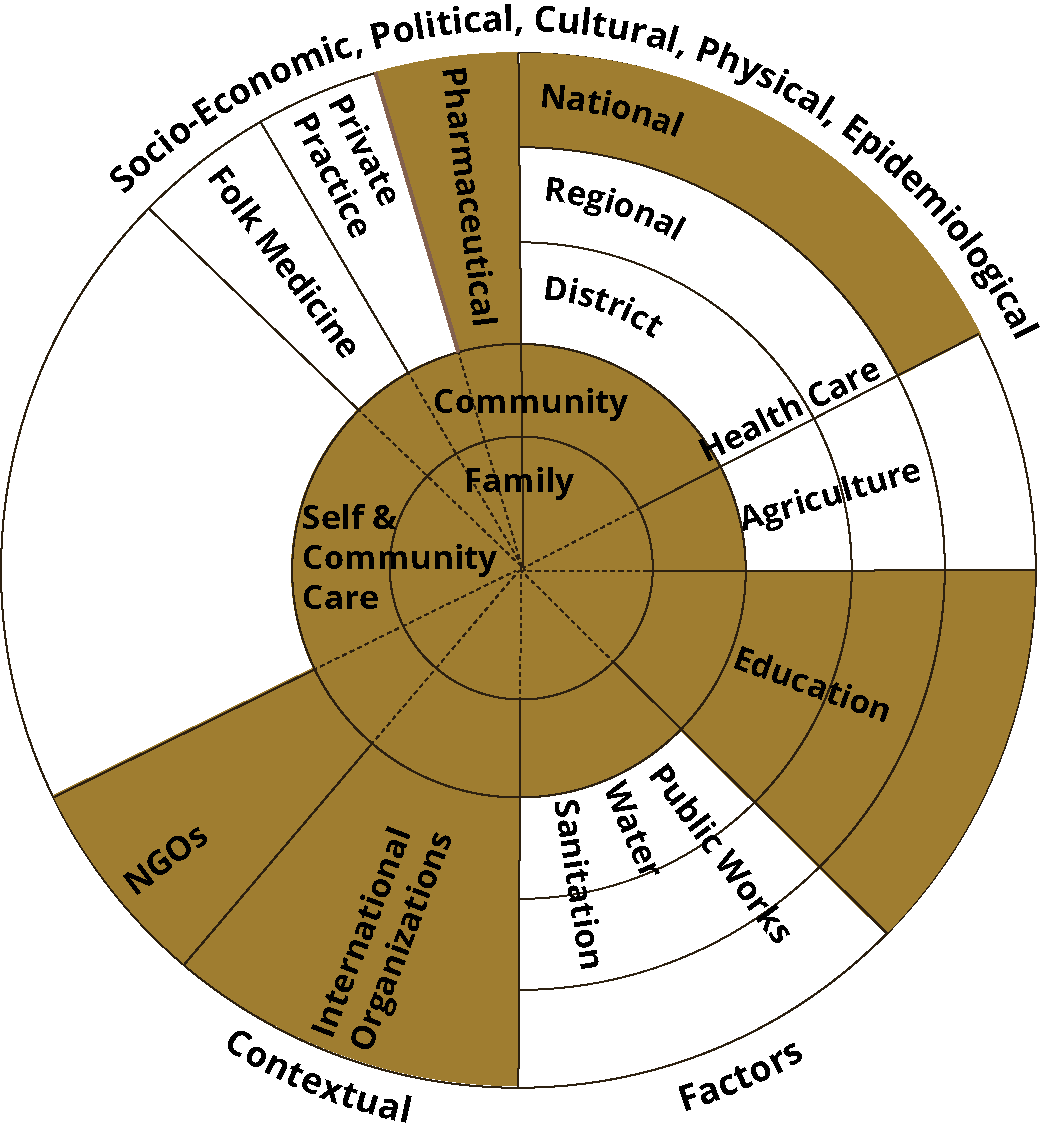
Pharmaceutical
Availability of pharmaceuticals can affect a facility’s ability to provide patients with the drugs they need.
National
National-level treatment guidelines are disseminated throughout the health care system to improve patient treatment outcomes.
Education
A patient’s education level may influence his or her decision to seek care or follow treatment.
NGOs & International Organizations
NGOs or international organizations assist the government to provide patients with care and treatment, improve national guidelines, or support community outreach programs.
Community & Family
The attitudes and support of community health workers and family members can influence how well a patient adheres to treatment.
-
Reading: What is a Health Information System? (10 min)
Information systems support local and global health interventions. Health Information systems combine various data to create information about health status, health care, provision and use of services and health impact.
Let’s look more closely at how health information systems work to make this possible.
Remember that every system combines different elements, or inputs, through some sort of processes to produce outputs.
Instructions: Click or tap each input, process, and output to see how an information system works to support health system outcomes.
What resources go into a health information system?
- Legislative, regulatory, and planning frameworks that govern how the system works.
- Resources, including personnel, financing, logistics support, information and communication technology, and coordinating mechanisms.
What processes support effective use of health information systems?
- Indicators to assess changes in health outcomes.
- Data sources that are linked to indicators.
- Data management methods for collecting, storing, analyzing, and disseminating data.
What outputs result from a health information system?
- Information products that highlight the value of the data, such as dashboards, reports, and alerts.
- Dissemination and use of information by those making decisions when delivering care and treatment, planning and managing health programs, and developing health policies and strategies.
-
Activity: Health Information Systems (10 min)
In a health information system, where is data collected?
Instruction: Click or tap each place in a clinic where data is collected.

Billing
Data, such as treatment costs, are collected in billing.
Triage
Data, such as patient vitals, are collected in triage.
Exam room
Clinical data, including patient complaints, diagnosis, allergy information, and treatment, are collected in the examination room.
Reception
Data, such as patient demographics and chief complaint, are collected at reception.
Pharmacy
Data, such as medications filled, are collected in the pharmacy.
Stock room
Data used for inventory management, such as quantity received, dispensed, and on hand, are collected in the store room.
- Reading: Health Information Systems (2 min)
-
Quiz: HIS Reports (5 min)
Knowing the different components of a health information system and how its sub-systems work together makes it easier to find the data and information that you are looking for.
-
Reading: Summary (5 min)
Congratulations! You just finished learning about health information systems. In this module, you learned about information literacy, which is recognizing, accessing, evaluating, organising, and using information. You also learned about computer literacy, which is being able to use hardware and software effectively. Information system literacy means knowing how information systems work. When you put all these different types of literacy together, you can use hardware and software to recognize, access, evaluate, organise, and use information from various health information systems.
Finally, you learned that health information systems are made up of three main parts: inputs (or resources that go into a health information system), processes (activities that support effective use of health information systems), and outputs (the products and information that result from a health information system). Now go on to the final quiz.



